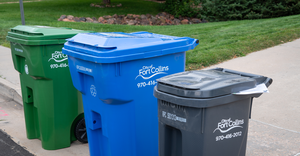Do Consumers Who Say They Prioritize “Green” Products Walk the Talk? Part One
Most people assert they will buy sustainable products over non-sustainable ones, but they don’t necessarily do what they say. Non-sustainable goods sell, and they sell well. Looking at just a few fast movers: globally, consumers spent $987.6 billion on electronics in 2022 and are expected to lay out $2,020.9 billion in 2032.

We routinely hear that consumers demand sustainable products. But do buyers’ choices align with what they say they want? This two-part series delves into consumers’ intentions versus actions around sustainable purchasing.
Part one highlights several studies—including some surprising findings— and advises brands on how to determine what consumers really want and how to engage them. In Part 2 Cathrine Jansson-Boyd, associate professor in Consumer Psychology at Anglia Ruskin University, Cambridge, U.K., answers questions like: What most drives peoples’ choices? And why would people say one thing and do another when it comes to sustainability?
Most people assert they will buy sustainable products over non-sustainable ones, but they don’t necessarily do what they say. Non-sustainable goods sell, and they sell well. Looking at just a few fast movers: globally, consumers spent $987.6 billion on electronics in 2022 and are expected to lay out $2,020.9 billion in 2032. They bought $216.34 billion worth of plastic water bottles in 2024; sales could reach $289.37 billion by 2029. And fast fashion, worth just over $122,257 million in 2021, is projected to hit $283,457.5 million by 2030.
So, why aren’t the “walk” and “talk” consistently lining up? Behavioral theorists and scientists who study consumers’ stated intentions versus actions attribute the discrepancies to several circumstances.
For starters, people have different ideas about what sustainability means and may make well-intended decisions based on misconceptions. Bain & Company found in a global survey of 23,000-plus consumers that 50 percent of them said sustainability ranks among their top four purchasing criteria; yet when asked to identify which of two given products generated the most carbon emissions, respondents either got it wrong or said they didn’t know about 75 percent of the time.
Another premise on the actions- and words-disconnect can be summed up by the long-lived saying, “old habits die hard.” Convenience especially seems to drive habits that are counter to green product loyalty. Think of the throw-away coffee cups that so many people grab on their way to work; the paper plates, plastic straws, disposable diapers, and single-use razors that fly off the shelves.
Folks become so used to having these products at their disposal that they often don’t think about what they’re consuming, says Cathrine Jansson-Boyd, associate professor in Consumer Psychology at Anglia Ruskin University, Cambridge, U.K. She led a study where most surveyed grocery store customers said they don’t buy products in plastic packaging. But film clips capturing them on their shopping rounds showed otherwise; it seemed they weren’t conscious of all the plastic they were loading in their carts.
Even when they are aware, shame can drive their responses, surmise behavioral experts. It’s human nature when asked flat out to give an answer that reflects what they believe is the right thing to do.
Still, understanding how people translate from intentions to actual behavior remains somewhat of a mystery, mainly because of limited ability to observe and measure what people do, says Michal Carrington, associate professor, University of Melbourne, Australia. Evolving ways of observing real consumer behavior—such as tracking online purchases—are helping to gain more insight. But generally, she says, researchers rely on stated intentions, which is fraught with biases.
We often hear younger consumers prioritize sustainability more than older people. But the age metric does not apply across the boards. In fact, some research points to that older groups spend more on sustainable goods, possibly because they can afford it. While younger age groups tend to say that they want to buy greener products but can’t necessarily afford to.
Money does seem to matter. Consumers say they will pay more for greener products, and a handful of studies show they follow through (including this recent McKinsey and NielsenIQ report)—but they can or will reach only so deep into their pockets. Bain found U.S. shoppers said they would pay an average premium of 11 percent for products with a minimized environmental impact, but the research group determined that the average premium for products marketed as sustainable in the U.S. is 28 percent.
Cost also seems to factor in by region to an extent. Almost half of all developed-market consumers believe that living sustainably is too expensive; about 35 percent of consumers in fast-growing markets have the same conviction, Bain reports.
So, what can sellers of sustainable products take away from the data to help them get into consumers’ heads and sway their choices?
For one, they’ve got two main types of messaging in their toolbox (1) appeals to ‘self-benefits’ that give a sense of 'warm glow' for doing the ‘right thing’ or a functional benefit, like saving money; (2) ‘other-oriented’ benefits that focus on 'doing good’ for a greater cause.
While there are exceptions, generally appeals to self-benefits are more motivating and effective in mobilizing consumer action to actually purchase the ethical/sustainable product, Carrington says.
The general consensus is that keeping communications simple makes sense.
“People don’t want to know every detail about what goes in a product. What they want to know is they are doing the right thing. I think having something indicating overall sustainability criteria rather than individual labels for every ingredient or material is best,” Jansson-Boyd says.
Digital tools can help assess messaging to really home in on what resonates with who.
Communicating a 'pathway to action' is important; it enables the consumer to form a clear plan of action [like where to shop and what to look for].
“A pathway to action helps to both create a sense of purpose and to map-out a tangible plan to mobilize positive intentions. And the plan helps to break old habits and create new ones,” Carrington advises.
Companies trying to sell sustainability need to look deep rather than assume that what people care about and will buy is based on their economic status, age, or any one-size-fits-all set of metrics.
With that thought, know that surveys should not be taken as gospel. They can help measure attitudes, but getting people to shift from having intentions to acting on them takes more work.
Anticipate regulations, and be a part of shaping them, as they will drive consumers’ behaviors. A company’s ability to anticipate policy shifts and build future-proof portfolios will help determine whether it can outpace competitors,” Bain says.
Perhaps as important as anything, companies need to be innovative as they design and develop products to really penetrate the market and affect change across a broad customer base with complex perceptions and motivations.
About the Author
You May Also Like




